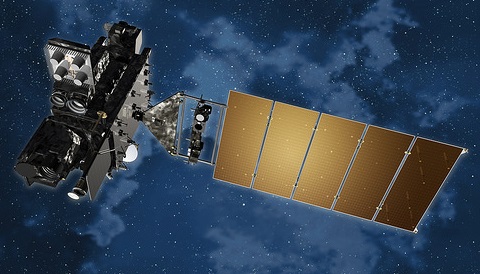☀️ SOLAR INDICES (1/5)
SFI: 148
A-index: 0
K-index: 0
foF2: 8.5 MHz
MUF (DX): 34.0 MHz
D-Layer: 29%
📊 NOAA Scales
R0 S0 G0
☀️ X-RAY FLUX (5/5)
Past 6hr
Current: C1.6
🟢 SMALL FLARE
Minimal impact
Flare Classes: X=Major (HF blackouts) M=Medium (regional HF degradation) C=Minor (slight absorption) B=Weak (normal)
Red line=0.1-0.8nm Cyan=0.05-0.4nm. Spikes=flares causing radio blackouts. Higher flux=worse HF.
NOAA SWPC 06:30Z
🌌 AURORA FORECAST (4/5)
🟢 MINOR
Power: 26.0 GW
K-index: 0
Polar regions
📻 VHF enhanced
🟢Green=2m/6m scatter possible 🟡Yellow=Enhanced 🔴Red=Intense aurora
Point antennas north, use SSB/CW modes. Best during K≥4 activity.
📡 D-REGION ABSORPTION (3/5)
🟡 Moderate (Day)
⏰ Transitional - 06:30Z
💡 Mid bands OK
Real-time HF absorption from solar X-rays
🔴Red=High (HF challenging) 🟡Yellow=Moderate 🟢Green/Blue=Low (HF good)
Higher absorption = lower frequencies work better
📻 BAND CONDITIONS (2/5)
160m: 🟡 Fair
80m: 🟡 Fair
40m: 🟢 Good
30m: 🟢 Good
20m: 🟢 Good
17m: 🟢 Good
15m: 🟢 Good
12m: 🟡 Fair
10m: 🟡 Fair
6m: 🔴 Closed
🎯 Best Now: 20m, 17m, 15m, 12m
Based on MUF=34.0MHz
☀️ SOLAR INDICES (1/5)
SFI: 148
A-index: 0
K-index: 0
foF2: 8.5 MHz
MUF (DX): 34.0 MHz
D-Layer: 29%
📊 NOAA Scales
R0 S0 G0
🚀 Capture Live Weather From Space! 🌍
Build your own GOES-R satellite receiver and get stunning real-time Earth images right at home!
This DIY guide shows the full setup — antenna, LNA, SDR, and decoding — all with affordable hardware. Perfect for SDR lovers, weather enthusiasts, and ham radio hobbyists.
#GOESR #WeatherSatellite #SDR #DIYRadio #HamRadio #SpaceImages

Introduction to GOES-R The GOES-R series (Geostationary Operational Environmental Satellite-R) represents NOAA's latest generation of weather satellites, including GOES-16 (GOES East) and GOES-17/18 (GOES West). These satellites transmit high-resolution weather imagery and atmospheric data that can be received by amateur radio operators and weather enthusiasts using relatively affordable equipment. Key Benefits: Real-time weather imagery updated
☀️ X-RAY FLUX (5/5)
Past 6hr
Current: C2.2
🟢 SMALL FLARE
Minimal impact
Flare Classes: X=Major (HF blackouts) M=Medium (regional HF degradation) C=Minor (slight absorption) B=Weak (normal)
Red line=0.1-0.8nm Cyan=0.05-0.4nm. Spikes=flares causing radio blackouts. Higher flux=worse HF.
NOAA SWPC 05:00Z
🌌 AURORA FORECAST (4/5)
⚪ QUIET
Power: 15.0 GW
K-index: 1
Minimal
📻 Normal VHF
🟢Green=2m/6m scatter possible 🟡Yellow=Enhanced 🔴Red=Intense aurora
Point antennas north, use SSB/CW modes. Best during K≥4 activity.
📡 D-REGION ABSORPTION (3/5)
🟢 Low (Night)
⏰ Low nighttime - 05:00Z
💡 All bands good
Real-time HF absorption from solar X-rays
🔴Red=High (HF challenging) 🟡Yellow=Moderate 🟢Green/Blue=Low (HF good)
Higher absorption = lower frequencies work better
📻 BAND CONDITIONS (2/5)
160m: 🟢 Good
80m: 🟢 Good
40m: 🟢 Good
30m: 🟢 Good
20m: 🟢 Good
17m: 🟢 Good
15m: 🟢 Good
12m: 🟡 Fair
10m: 🟡 Fair
6m: 🔴 Closed
🎯 Best Now: 80m, 40m, 30m, 20m
Based on MUF=34.0MHz